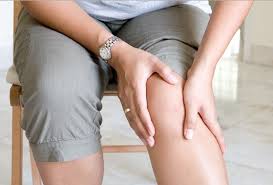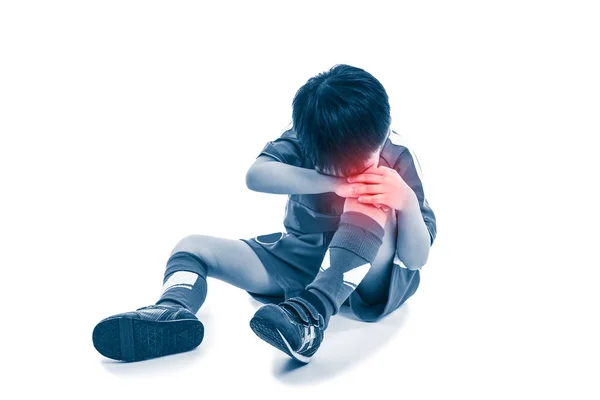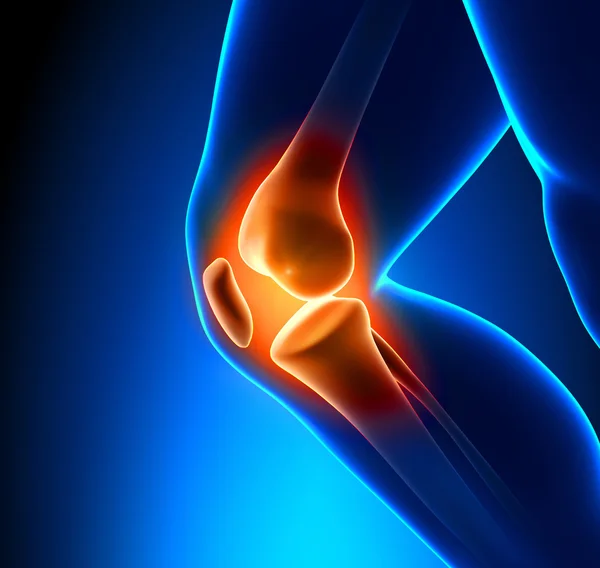Knee pain is the third most common reason patients come to see us in our clinic. You may have heard of the common presenting conditions that are related to the knee which are osteoarthritis, meniscus tears and patellofemoral pain. All of these problems can share some features in terms of which activities, movements or positions trigger pain, but the management of each problem is different and unique to the patient.
In this blog I aim to highlight the key features of each condition – what they are, common signs and symptoms and the role physiotherapy can play in their management.
Knee osteoarthritis (OA)
What is it?
This condition is a disease process that affects the entire knee joint. OA is commonly regarded as a loss of cartilage from the joint, but changes in other joint tissues, including the joint capsule, ligaments and muscles that work the knee can all contribute to pain, weakness and loss of function. There are two types of knee OA. Primary OA is the age-related degeneration of articular cartilage with no known cause whereas is degeneration due to a known cause which could include knee trauma, rheumatoid arthritis or other conditions.
What are the symptoms of Knee OA?
The most commonly reported symptoms of knee OA are activity-related joint pain in patients aged 45 years or older, morning stiffness and joint noises (crepitus of the knee joint).
How can physiotherapy help?
The GLA:D program is a physiotherapist-led exercise and education program developed in Denmark that has been adopted in Australia. It runs over the course of 6 weeks and includes strengthening, balance and other exercises tailored towards the management of hip and knee osteoarthritis.
Developing an individualized exercise program for you bases on key impairments identified during a targeted and comprehensive physical assessment. These impairments could be stiffness (loss of movement), weakness (loss of strength), balance issues or poor movement habits.
Overall, regular exercise is vital for relieving pain and improving function in people with OA and is recommended as a first line of treatment. When Knee OA has progressed over several years, is not responding to physiotherapy it is greatly affecting a patients quality of life, total knee replacement may be considered.
Meniscus Tears
What are they?
The menisci are two C-shaped pieces of dense cartilage within the knee that act to transfer load, absorb shock, increase stability and contribute to joint lubrication and nutrition of the knee. Meniscus tears can occur in a young patient with acute knee trauma (a fall, twisting or contact injury) or in an older person without trauma. They can occur in isolation or in conjunction with other problems. In a patient over 45 years the meniscal tear may be a feature of knee OA or could come about with minor trauma i.e. catching foot on uneven pavement causing a smaller twisting action.
The types of tears are often described by their shape and orientation and are displayed on MRI. These can include longitudinal, radial, horizontal, flap, complex and bucket handle.
Common symptoms of Meniscus Tears:
- Pain when twisting or pivoting on the knee
- Swelling and stiffness
- Clicking, catching, or locking in the knee
- Painful giving way of the knee under bodyweight.
How can physiotherapy help?
Non-surgical management with a physiotherapist will look to address the underlying impairments that we can see or measure in the clinic. This could be reducing swelling, restoring movement, improving strength or teaching you more effective movement patterns. In some circumstances there is a need to refer for surgical review. This may be based on MRI findings of a tear in combination with mechanical symptoms such as locking or catching. These features suggest a large tear that is unlikely to heal or respond to physiotherapy.
Patellofemoral Pain
What is it?
This condition describes pain coming from the knee cap (patella) or surrounding tissues that support the patella. Patellofemoral pain is one of the most common causes of anterior knee pain. There can be many factors contributing to pain and loss of function including:
- Poor movement or position of the patella itself,
- Loss of strength in the quadriceps or other powerful muscles of the leg,
- Weakness of the hip muscles (above the knee)
Common symptoms of Patellofemoral Pain:
- Often generalised pain around, under or behind the knee cap (in the front of the knee),
- Crepitus/grinding felt behind the knee cap,
- Pain with simple daily activities that stress the patellofemoral joint such as squatting, walking up or down inclines, rising from a chair and going up and down stairs.
How can physiotherapy help?
Physiotherapy should be the first line of treatment for patellofemoral pain and has been demonstrated in many studies and trials to be effective. Similar to Knee OA and Meniscal tears, identifying the impairments and contributing factors in your particular situation is key. This can include targeted exercises, taping, upgrading your footwear and modifying the activities you are doing.
Take Home Message for Patients
Understanding the physical cause of your knee pain is important and we know from treating patients for over 10 years that you want to know what has gone wrong with your knee. The next step, identifying the key impairments and contributing factors to your pain paves the way for a treatment program tailored to you and your individual situation. This is not a “cookie cutter” approach but rather a problem-solving process to give you the best chance of success with physiotherapy.
If you are experiencing trouble with knee pain, reach out and call us today on 6056 6616. Our helpful front desk team will help you find a day and time that works for you to come in and see one of our experienced physio’s and get you started on moving and feeling better! If you would like to see our physio’s in action, watch some of our great videos on knee pain by clicking here.



